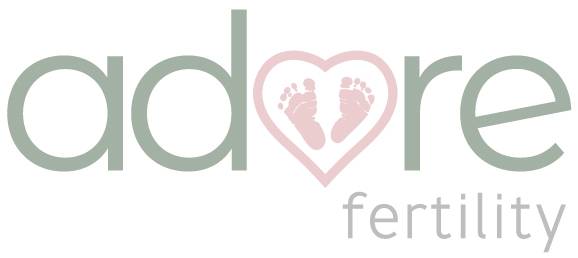
Fertility Medications vs. Assisted Reproductive Technologies:Choosing the Right Path for You
The path to parenthood can be an emotional rollercoaster for many individuals and couples. A significant number of people find themselves facing the unexpected challenge of infertility. This complex issue can take a toll on various aspects of one’s life, creating a journey filled with emotional upheavals, tough decisions, and frequent medical consultations. In this landscape of uncertainty, medical advancements offer a beacon of hope. Two primary avenues are fertility medications and assisted reproductive technologies (ART), and here we provide details about fertility medications vs. assisted reproductive technologies.
Fertility medications stimulate reproductive hormones, encouraging the development and release of eggs in women and enhancing sperm production in men. They are often the first line of defense, a less invasive approach to boosting fertility potential. However, their effectiveness can vary greatly depending on the underlying cause of infertility, and individuals must explore these medications thoroughly.
On the other hand, assisted reproductive technologies (ART) represent a more advanced level of fertility treatment. These procedures involve directly manipulating eggs and sperm to enhance the chances of conception. ART encompasses a range of techniques, including but not limited to In Vitro Fertilization (IVF) and Intrauterine Insemination (IUI). These methods can be particularly beneficial for those without success with fertility medications or certain medical conditions. Patients must understand these procedures in depth, given the complexity and higher costs associated with ART.
In the face of infertility, understanding these options is the first step towards making an informed decision about your fertility journey. Both paths offer unique benefits and considerations, and the choice between them should be made after careful consultation with healthcare professionals and thorough personal reflection.
What are Fertility Medications?
In the journey to overcome infertility, fertility medications play a crucial role. These are drugs designed to regulate or stimulate the body’s reproductive hormones, increasing the chances of conception by enhancing the number and quality of eggs or sperm. These medications primarily aim to address issues related to hormonal imbalances or ovulation disorders, boosting the natural process and increasing the likelihood of pregnancy. They are often the first course of action recommended for individuals or couples experiencing difficulty conceiving, primarily when the underlying cause is ovulation issues.Common types of fertility medications include:
- Clomiphene Citrate (Clomid, Serophene): Often the first treatment option for women with ovulation issues.
- Gonadotropins: These include human chorionic gonadotropin (hCG), Follicle-stimulating hormone (FSH), and human menopausal gonadotropin (hMG).
- Metformin: Used for women who have insulin resistance or polycystic ovary syndrome (PCOS).
- Letrozole: Used to induce ovulation.
These medications work primarily by:
- Stimulating the ovaries to produce multiple eggs during one cycle.
- Regulating the menstrual cycle, ensuring the timely release of an egg.
- Preparing the lining of the uterus to receive an embryo post-fertilization.
Exploring Assisted Reproductive Technologies (ART)
When initial fertility treatments do not result in pregnancy, many turn to Assisted Reproductive Technologies (ART). ART refers to a range of procedures that assist in conceiving a child, circumventing specific fertility issues by facilitating the union of egg and sperm.The most common forms of ART include:
- Intrauterine Insemination (IUI): Often considered the first step in fertility treatment beyond medication, IUI involves placing sperm directly inside the uterus, which promotes fertilization by increasing the number of sperm that reach the fallopian tubes.
- In Vitro Fertilization (IVF): A more technologically advanced procedure, IVF involves extracting eggs from a woman’s ovaries, fertilizing them in a lab with sperm, and then transferring the fertilized egg (embryo) back into the woman’s uterus.
- Third-party assisted ART includes using donated eggs, sperm, or embryos or having another woman carry a pregnancy for you (gestational carrier or surrogate).
- IUI simplifies the sperm’s journey to the egg, making fertilization more likely. It’s less invasive and often used in unexplained infertility, mild endometriosis, or mild male factor infertility.
- IVF can solve more complex fertility issues, such as blocked fallopian tubes, severe male factor infertility, or failed IUI attempts. It involves multiple stages, including ovarian stimulation, egg retrieval, fertilization in the lab, and embryo transfer.
- Third-party assisted ART is an option for those who have genetic disorders, no viable eggs or sperm, or for same-sex couples or single individuals looking to have a child. It involves legal, psychological, and medical considerations.
- Fertility Medications: The success rates of fertility drugs vary significantly depending on factors such as age, diagnosis, and the drug used. For instance, the pregnancy success rate for Clomiphene Citrate (Clomid) can range from 7% to 30%, whereas injectable hormones may have a success rate up to 50%.
- ART: ART generally has higher success rates, with IVF success rates for women under 35 being around 40% – 45%. However, these rates decrease as the woman’s age increases.
- Individual Factors: Age, underlying fertility issues, lifestyle, and duration of infertility can all impact success rates.
- Treatment Variables: The type of treatment and the clinic’s experience and technology play a crucial role.
- Emotional and Financial Costs: ART procedures are generally more expensive and emotionally demanding, which can influence a couple’s treatment decisions.
- Fertility medications are generally less expensive than ART but may require more extended periods of use, potentially leading to increased costs over time.
- ART procedures, particularly IVF, come with higher upfront costs due to their complexity, technology use, and necessary medical support.
- Both options can take a toll on one’s body and emotional well-being, with ART often being more physically demanding due to invasive procedures.
- The emotional stress of ongoing treatment cycles, especially with unsuccessful attempts, must be considered.
- Treatment with fertility medications can span several months with regular monitoring.
- ART procedures require a significant time commitment for various stages, including preparation, procedure, and recovery periods.
- Age significantly impacts fertility, and the effectiveness of both treatments decreases as one’s age increases.
- The specific fertility health issues present can also dictate which treatment is more likely to be successful.
